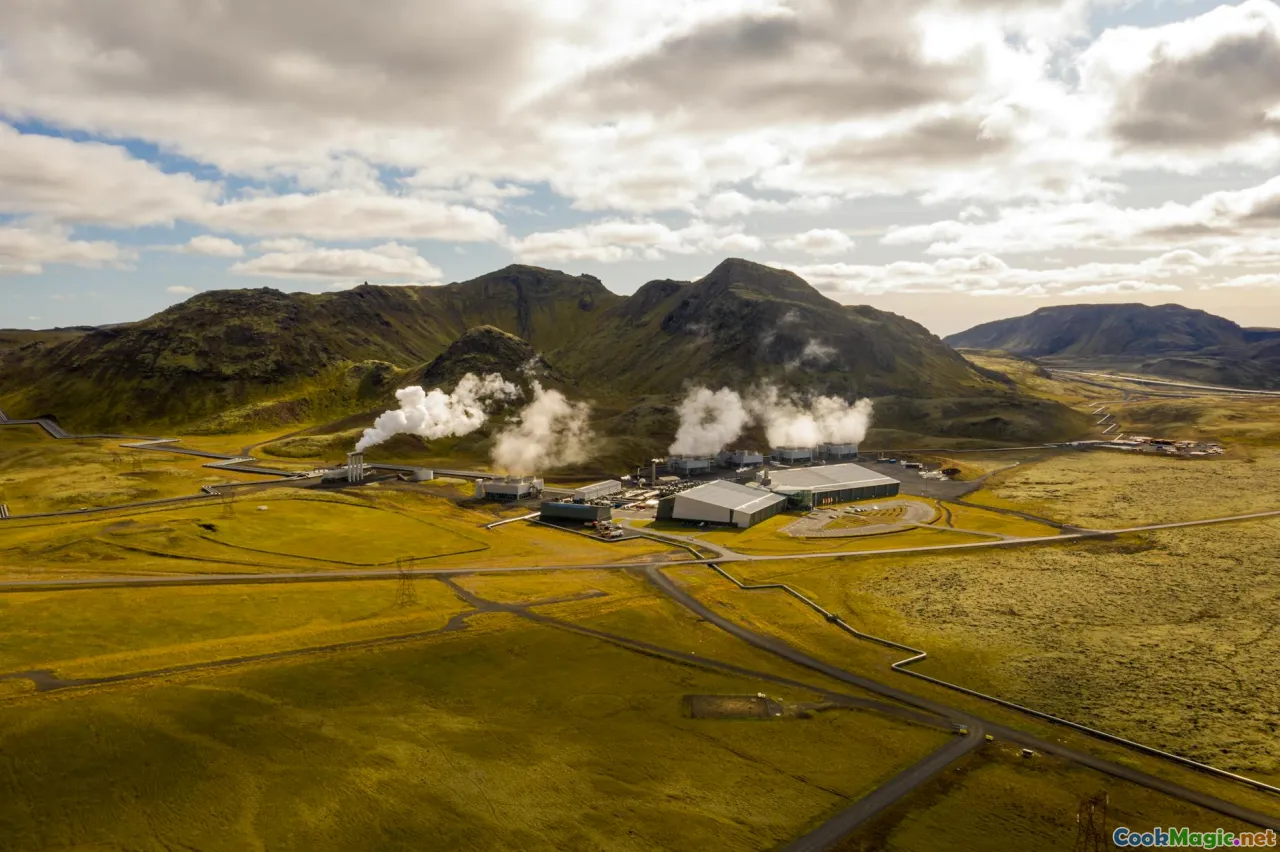The Influence of Geothermal Energy on Icelandic Baking
7 min read Discover how Iceland's geothermal energy revolutionizes baking, infusing traditional recipes with sustainable warmth and volcanic authenticity. May 02, 2025 09:00
The Influence of Geothermal Energy on Icelandic Baking
Imagine a country where the earth itself becomes a kitchen—a land where the simmering, bubbling heart of volcanoes fuels not only geothermal power but also the very essence of its culinary traditions. Iceland, known for its dramatic landscapes and volcanic activity, has harnessed this fiery force in ways that extend far beyond electricity and heating. Among its most fascinating applications is the influence of geothermal energy on baking—a practice that intertwines Icelandic history, culture, and sustainability in a uniquely compelling way.
From Lava Fields to Loaves: A Historical Context
Iceland's relationship with geothermal energy is rooted in necessity and ingenuity. For centuries, Icelanders have lived amidst active volcanoes, geysers, and hot springs. Early settlers, arriving in the 9th century, discovered natural hot springs that provided warmth and a means to cook and preserve food. Over generations, Icelanders learned to utilize these geothermal resources, creating natural hot baths, greenhouses, and even small-scale baking methods.
In the 20th century, as the country's energy needs grew, Iceland began to tap into its geothermal reservoirs systematically. Today, approximately 85% of Iceland's electricity and heating are derived from renewable geothermal sources. Yet, one of the most captivating cultural legacies remains the way geothermal heat is used in baking—transforming the landscape's volcanic energy into culinary tradition.
The Science and Art of Geothermal Baking
How Geothermal Heat Transforms Baking
Unlike conventional ovens that rely on fossil fuels or electricity, geothermal baking leverages the Earth's natural heat. In Iceland, this process often involves burying dough or food items near hot springs, geothermal vents, or using specially designed geothermal ovens—sometimes called "earth ovens"—that trap and radiate underground heat.
The heat from volcanic activity can reach temperatures from 80°C to over 200°C—perfect for slow, gentle baking. This method results in baked goods with a distinct texture: crusts are crisp but not brittle, insides are moist and tender, and flavors develop a subtle earthy undertone derived from the mineral-rich environment.
Traditional Icelandic Baked Delights
One of the most iconic examples of geothermal baking is the laufabrauð, or leaf bread, traditionally made during the winter solstice. While typically fried, some modern interpretations involve baking near geothermal sources to achieve a crispy texture without oil. The mineral-rich soils and hot springs also influence the ingredients, lending a unique depth to the bread's flavor.
Another traditional dish is skyr, Iceland's famous yogurt-like dairy product, which is sometimes baked into bread or cake using geothermal heat to ferment or dry the dough, creating a subtly fermented, tangy flavor profile.
Modern Innovations and Sustainable Practices
In recent years, Icelandic entrepreneurs and chefs have combined traditional methods with modern technology. For example, geothermal bakeries use underground heat tunnels or boreholes to bake bread and pastries, reducing reliance on electricity or fossil fuels. Some experimental projects even involve baking in natural volcanic craters, where the geothermal activity provides a consistent heat source.
This sustainable approach not only preserves Iceland’s culinary heritage but also exemplifies innovative environmental stewardship—showing how ancient volcanic forces can be harnessed responsibly to create delicious, eco-friendly food.
Personal Encounters and Cultural Significance
As a food writer who has traveled extensively across Iceland, I’ve had the privilege of witnessing firsthand how geothermal energy shapes local cuisine. I remember visiting a small village near Húsavík, where a family-owned bakery uses a natural hot spring to bake bread for their community. The aroma—warm, earthy, and inviting—fills the air as the dough slowly transforms into golden loaves.
The experience is profoundly emotional; it’s a connection to the land, the volcanoes, and the resilience of Icelandic people who have turned their geological challenges into cultural treasures. Sharing a warm slice of bread baked with geothermal heat feels like participating in an ancient tradition—one that’s as much about community and sustainability as it is about flavor.
The Future of Icelandic Baking and Geothermal Energy
Looking ahead, Iceland continues to innovate at the intersection of energy and cuisine. Culinary tourism centered around geothermal baking is on the rise, attracting visitors eager to taste bread, cakes, and even pastries cooked by Mother Earth herself.
Emerging technologies include portable geothermal ovens and community baking projects that use geothermal heat for multiple purposes—reducing waste, conserving energy, and fostering local food movements. These initiatives not only preserve Iceland’s culinary identity but also serve as models for sustainable practices worldwide.
Conclusion: A Flavor Rooted in the Earth
Iceland’s volcanic landscape has shaped much more than its geography; it has profoundly influenced its culinary identity. The use of geothermal energy in baking is a testament to the ingenuity and resilience of Icelanders—transforming the fiery energy of the earth into nourishing, flavorful foods that carry the soul of the land.
Next time you indulge in a warm, crusty loaf or a tender cake, consider the ancient, powerful forces that may have helped create it. Iceland’s geothermal kitchens remind us that sometimes, the most sustainable and authentic flavors come from embracing the natural world’s raw, volcanic energy—a delicious harmony of earth, fire, and tradition.









